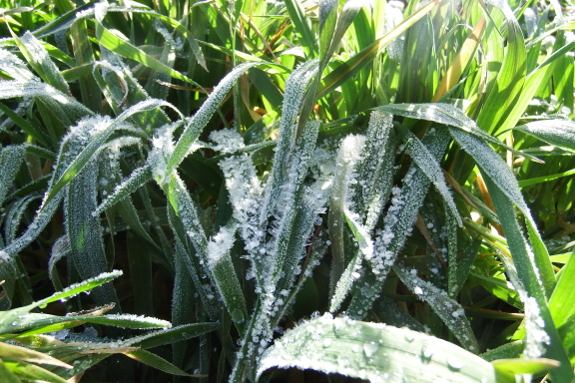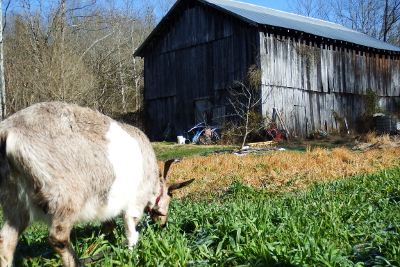
Types of oats

I didn't realize until
last year that there are not only many different varieties of oats, but
there are actually whole different species to contend with. In addition
to hullless oats (which tend to be grown for grain instead of pasture or biomass), there are two main types of oats you can find being grown in the U.S.
Common Oats (aka Spring Oats, Avena sativa)
are the most widespread and are generally what you'll find if you buy
seeds at the feed store that were meant to be fed to animals. On the
other hand, Red Oats (aka Southern Oats, Avena byzantina) are often planted for pasture or hay in the southern United States.
 The question becomes --- is species or timing of planting and grazing responsible for the fact that some of my oat cover crops have failed to winterkill
both last year and (so far) this year? Unfortunately, most of my oat
seeds came from a feed store with no label, so I can't know for sure
which species they belonged to. So I only have three real data points:
The question becomes --- is species or timing of planting and grazing responsible for the fact that some of my oat cover crops have failed to winterkill
both last year and (so far) this year? Unfortunately, most of my oat
seeds came from a feed store with no label, so I can't know for sure
which species they belonged to. So I only have three real data points:
- Ogle --- A. sativa --- not grazed, winterkilled
- Noble --- A. sativa --- grazed, did not winterkill
- Common --- A. sativa --- grazed, did winterkill
- Unknown feed store oats --- ??? --- not grazed but planted late, didn't winterkill
- Unknown feed store oats from a different year --- ??? --- not grazed and did winterkill
Perhaps some of you have
kept more meticulous notes on the variety and/or species of oats you
planted and on what happened in your own garden? If so, I hope you'll
comment and share your wisdom since my results are thus far
inconclusive.
Want more in-depth information? Browse through our books.
Or explore more posts by date or by subject.
About us: Anna Hess and Mark Hamilton spent over a decade living self-sufficiently in the mountains of Virginia before moving north to start over from scratch in the foothills of Ohio. They've experimented with permaculture, no-till gardening, trailersteading, home-based microbusinesses and much more, writing about their adventures in both blogs and books.
Want to be notified when new comments are posted on this page? Click on the RSS button after you add a comment to subscribe to the comment feed, or simply check the box beside "email replies to me" while writing your comment.

Dude. I use Texas A & M Agrilife Research website for tons of reference material. It is a wealth of information. Those guys know everything! Anyway they have some recommendations with "Dallas" being most cold tolerant. I know Texas is a long way from where you are but like I said, these guys know everything! http://stephenville.tamu.edu/topics/forages/forage-species/cool-season-annuals-perennials/oats/